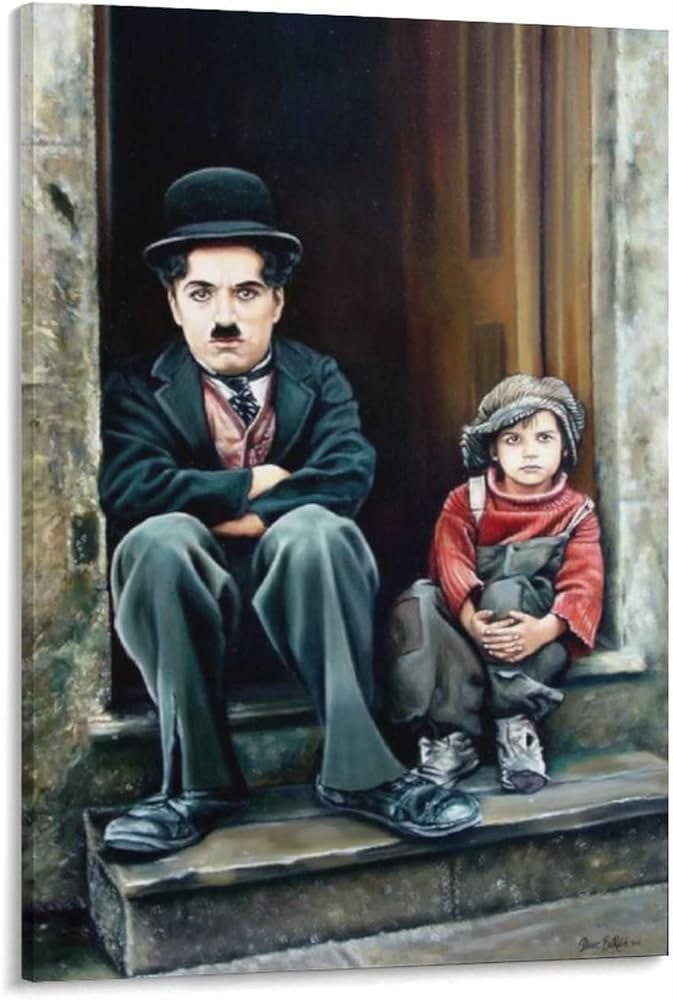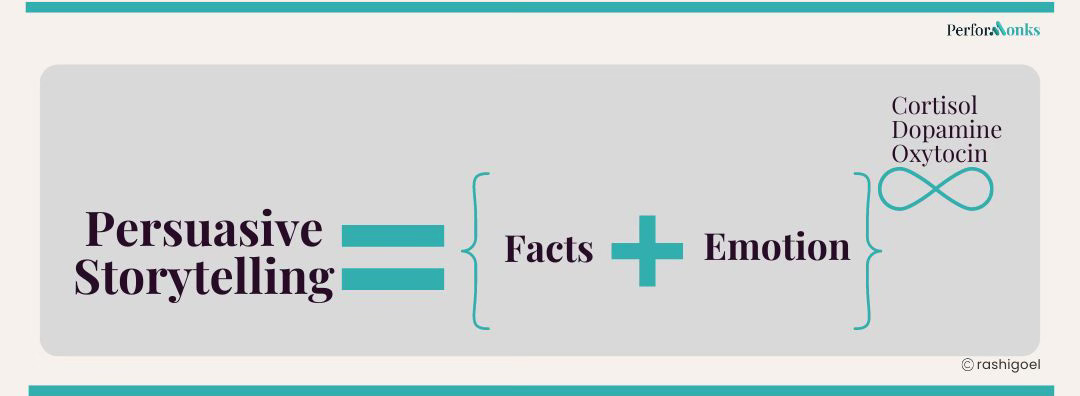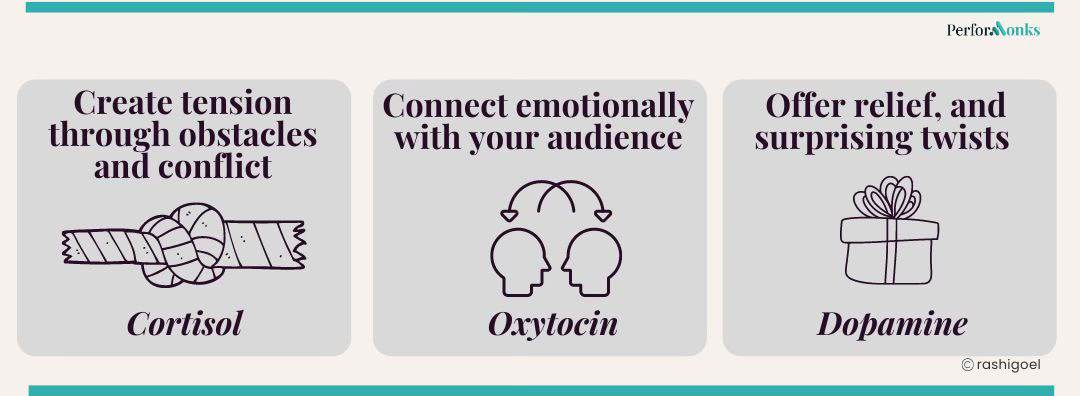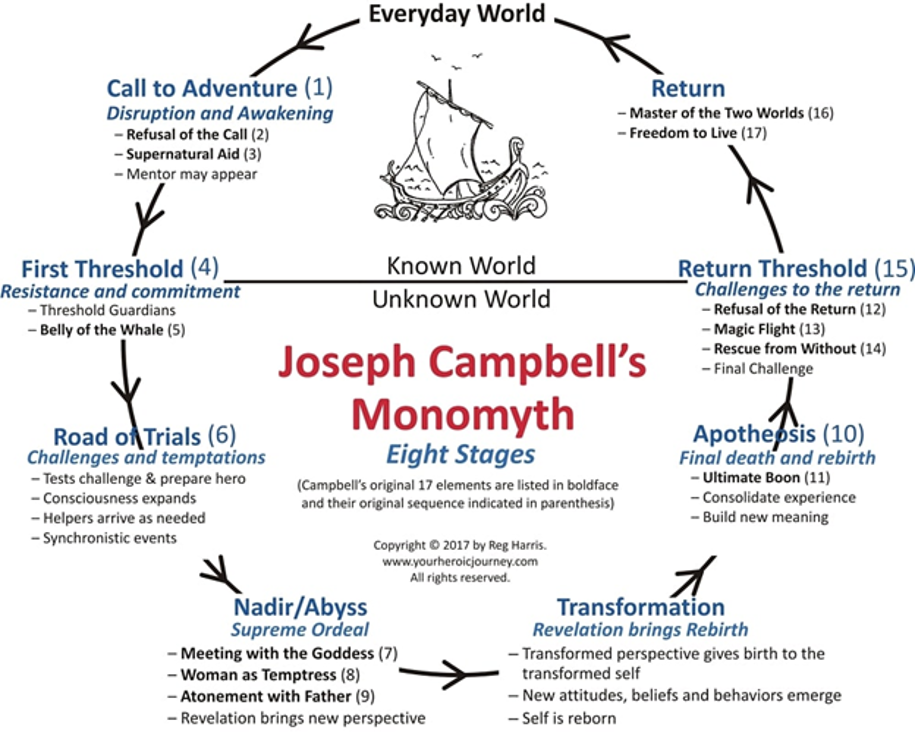Practical ideas on marketing strategy and self mastery they don’t teach in B-school. Performonks goes to 4,399 curious marketers and founders - join them here.
Summary of the storytelling series thus far
We are more persuasive when we tell stories.
2. Our stories become persuasive When we activate the EST (emotion-surprise-tension) cocktail in our brains.
Facts are relatively easy to gather. It’s trickier to engineer the EST cocktail of emotions. The seven universal storyplots come to our rescue. All we need to do is plug and play one of the plots into our situation and craft our story.
We’ve covered Overcoming the monster, Rags to riches, and Voyage and return.
On to plot no. 4 - Comedy. All plots are about character-conflict-change. Yes, even comedy contains conflict.
Ingredients of the comedy plot
As per Christopher Booker, this plot is less rigid than the other plot types.
But it’s not just about being funny.
It could be about characters in love but kept apart by a series of plot twists and misplaced identities that are resolved by the end of the story, such as in Much Ado About Nothing, Midsummer Night's Dream, Angoor, or Bridget Jones’ Diary.
It could also be about characters overcoming a series of misadventures in their ordinary or extraordinary lives, such as in Chaplin movies, Ocean’s Eleven, Seinfeld, Frasier, Friends, and all sitcoms you can think of.
Application to marketing
“If brands can be humorous, then it shows that they’ve got a sense of intelligence and a broader perspective on the world.”
- Orlando Wood, author of ‘Lemon: How The Advertising Brain Turned Sour’.
A funny brand communication does not mean a brand has used a comedy story plot. Sometimes, when a brand is silly, funny or witty, it’s just silly, witty or funny.
It’s brand personality is funny. Like Old Spice.
Or it uses humour to exaggerate product benefits. Like Fevicol, Center Fresh.
However, the true application of a comedy plot is rare. Here are three examples I personally love.
1. Since comedy is all about misadventures and confusion, a brand that’s strategically anchored on comedy rescues its consumers from misadventures. Like this hilarious Specsavers campaign - “Should’ve gone to Specsavers.”
The comedy plot is embedded in the consumer need because we are prone to making mistakes when we don’t wear spectacles.
Specsavers rescues us from these embarrassments.
2. A brand shines a light on the absurdities of the consumer.
Few brands have the courage to laugh at their own consumer’s idiosyncracies and have them join in, too.
Royal Imperial does this so well in their “men will be men” campaign.
If you watch this series till the end, you will see why the comedy plot is intertwined with strategy. The strategy becomes fertile ground for different angles on ‘men will be men.’ The first few ads are about the lengths men will go to woo women—individually and as competitors. The last few are about how men change the minute they become husbands.
3. A third way brands can use this story plot is to embed it into their vision of the world.
Sprite has 'cut through clarity on the world, and it is a counterpoint brand to over-the-top displays that colas indulge in.
Sprite's 2010s advertising had a hard-edged humor that openly made fun of showoffs and pretentiousness.
Sadly, as the brand needs to maintain appeal to a broader audience, it has had to smoothen that edge. In its latest summer campaign, it has resorted literally, to joke-telling. Note: this particular ad is not a comedy storyplot.
Application to corporate
Used right, this story plot is perfect for ‘zor ka jhatka dheere see large.’ (hits hard, but hurts soft). Comedy is the best way to share feedback without inflicting pain or destroying a relationship.
But it can also go horribly wrong.
Don’t attempt it if you can’t tell a joke, aren’t witty, or your sarcasm cuts too deep.
Since 99% of us corporate types can’t do comedy well, we now hire comedians for annual conferences or office parties.
How else can you call your boss a micro-manager to his face in public and get a chuckle in response?
If you wish to bring about change in your team or workplace, make light of absurdities, misfortunes that we call upon ourselves, and idiosyncracies we know are idiotic, but follow anyway.
You can even make fun of the environment, government, taxation, consumers, or wokeness and put it out there. Like in this video.
If you have the gift of comedy. Please use it. A lot. It will make you popular, likeable and influential at work.
How does all this fit into the Hero’s Journey?
Like I said, all plots are different patterns of character-conflict-change. This is exactly what a Hero’s Journey is, too.
A Hero’s Journey is a story in which the protagonist ventures into the unknown, faces challenging obstacles, and overcomes them.
Joseph Campbell developed the Hero’s Journey thesis.
Christopher Booker found the underlying seven plots that a hero’s journey can follow.






